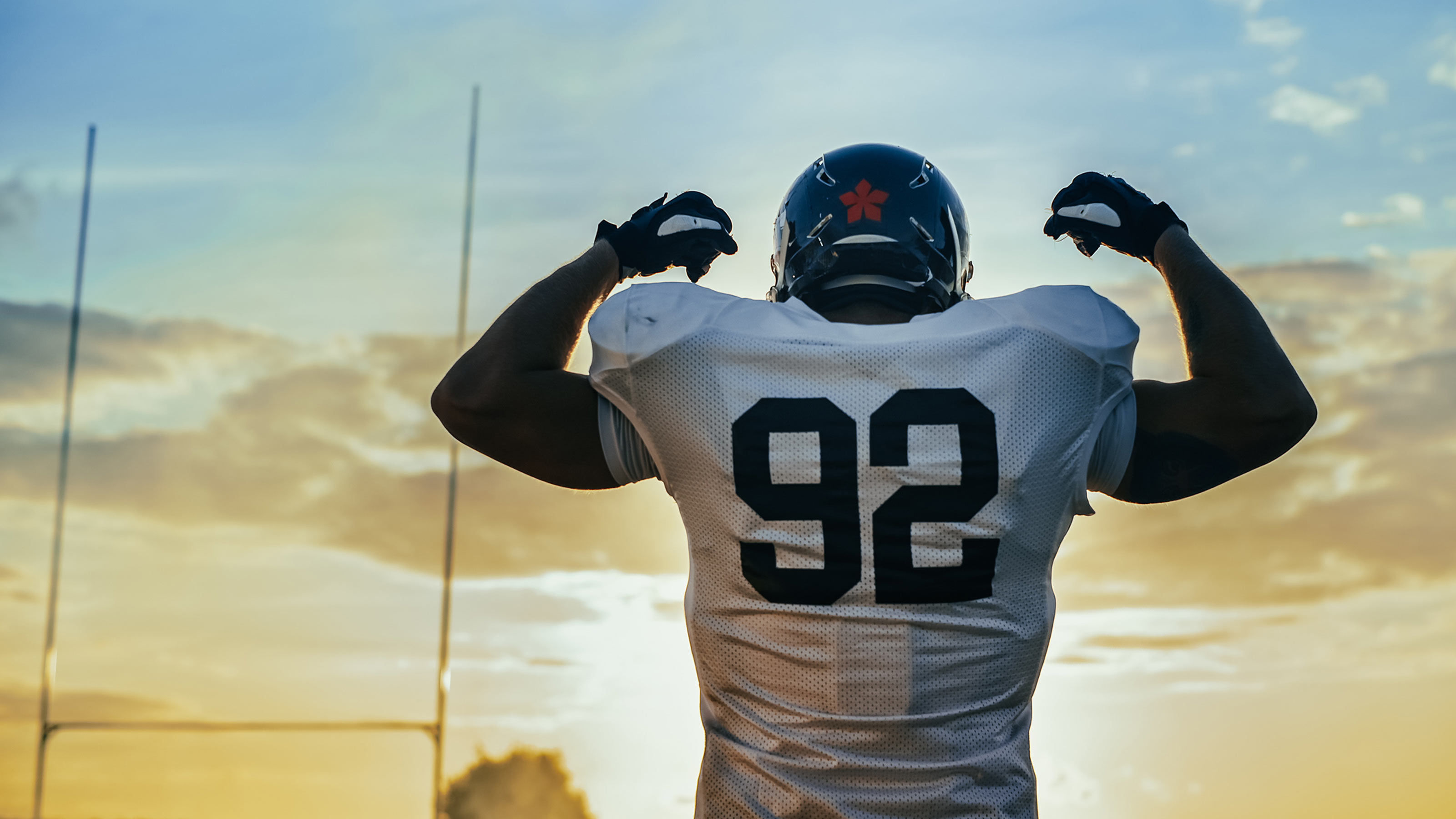Tax Implications When NCAA Student Athletes Make Money
Now that college athletes can profit from their name, image and likeness (NIL), they should know those deals for limo rides, free gear and endorsements can come with some strings attached.


This is the first academic year that NCAA student-athletes have been able to earn money for their accomplishments and popularity. The governing body created “name, image and likeness” guidelines in July 2021 from which participants can profit in various ways.
This April, there was another first-time occurrence for student-athletes with NIL deals: paying taxes. Filings were due April 18, which required many student athletes to submit IRS forms for the first time in their lives, while others experienced a different aspect of the process.
Here are some of the hurdles those with NIL income are now faced with.

Sign up for Kiplinger’s Free E-Newsletters
Profit and prosper with the best of expert advice on investing, taxes, retirement, personal finance and more - straight to your e-mail.
Profit and prosper with the best of expert advice - straight to your e-mail.
What Can Be Taxed?
NIL deals have earned student-athletes a variety of endorsement and promotional deals. These offers come with various forms of payment. All that can be taxed.
Traditional compensation is easier to handle. However, when it comes to receiving free products, car usage, paid trips, payment with cryptocurrency, or other goods and services as compensation, that can make things tricky. All those forms of compensation are subject to tax.
Those with NIL deals or any sponsorships are considered self-employed by the government. Anyone who makes $600 in income, be it cash or the value of received items or services, will be subject to taxation under the self-employed Internal Revenue Service guidelines.
Different Tax Forms
Some student-athletes may be familiar with W-2 forms. This is how most traditional workers handle their taxes. Have a work-study job or work at a summer camp? That usually means automatic deductions every pay period and the W-2 form for tax returns the next year.
Self-employment comes with two major differences: First, these deals do not have money taken out automatically before payout. The recipient is responsible for paying any taxes independently. This also means a different form comes in the mail at tax time.
There are variations of the 1099 form that self-employed taxpayers will receive. The 1099-NEC comes with direct payment, while a 1099-K arrives when paid through a third party, such as PayPal. For products and services received, like trips or merchandise, that brings a 1099-Misc form.
All forms received must be submitted with a tax return to determine the amount owed. This is going to require you to file a business tax return, in addition to a personal form, with the extra forms needed with self-employment taxes.
Athletes in 41 of the 50 states will also be subject to state taxes if income crosses a threshold. It can add up, especially if you live in a high-tax state: A Sportico article found a shooting guard at UCLA with $100,000 in NIL income will have to pay over $5,000 more in taxes than a running back making that same amount going to Florida State. NIL income taxes must be paid out with state filings, which costs even more money.
Estimated Tax
On top of the usual federal and state income taxes, those who are self-employed must pay self-employment taxes. The tax rate for Social Security and Medicare on reported self-employment is 15.3% (self-employment taxes can be reduced through the use of a S-Corp vs. LLC). For those projected to pay, it’s recommended to pay at least $1,000 in quarterly estimated taxes to avoid a large bill in April. If paid yearly instead of quarterly, TurboTax outlines ways to avoid underpayment penalties.
In order to avoid penalties for paying too little or too late, one can either pay 90% of this year’s current estimated tax bill, or aim for the full amount of last year’s tax. If an individual is making more in the current year than in the former, it is recommended to pay 100% of the current year’s estimated bill.
The first option can be applied if it is expected that this year’s income will be less than the previous year, but underpayment penalties can still be incurred if payment adds up to less than 90%. It is typically safer to choose the second option and pay 100% of the previous taxes. This way, estimated tax penalties can be avoided no matter how much is owed on the tax return.
Keep Those Receipts
While the amounts owed and the right time to pay them can seem like a lot to swallow, the good thing is there are ways to shrink that amount. Welcome to the wonderful world of deductions.
Any expenses that are associated with making money from NIL deals can count against the income and lower the tax burden:
- If a company flies a student-athlete into a city for an appearance, but doesn’t pay for hotel or car rentals, those costs can be deducted.
- The same goes for new cameras, computers or consultants used for social media campaigns.
- Fees to websites, marketing agencies and lawyers to put together deals can all go against the income.
Make sure these amounts are known and can be backed up with receipts or card statements. If the expenses reduce the amount of income earned to under $400, there is no tax payment required.
Those earning income from NIL deals no longer qualify as dependents on parents’ or guardians’ returns. However, this means student-athletes can claim the American Opportunity Tax Credit, which can be up to $2,500. Also, any student loan interest can be deducted, up to $2,500. State filings may also provide additional opportunities to claim deductions and lower tax bills.
These deductions will lower the amount subject to the existing tax rates. They do not directly count against the amount owed.
Be aware that NIL income also carries FAFSA implications, meaning student-athletes may receive less need-based financial aid. Keep this in mind when filling out those forms, which are usually due in February before the new school year starts.
Get Kiplinger Today newsletter — free
Profit and prosper with the best of Kiplinger's advice on investing, taxes, retirement, personal finance and much more. Delivered daily. Enter your email in the box and click Sign Me Up.

Ron L. Brown, CFP, is the co-founder of Athlete Essentials and president of R.L. Brown Wealth Management. He is an expert in wealth management, retirement planning, tax and estate planning, and business management. Ron takes pride in his work to support clients in reaching their individual financial goals. He graduated from Asbury University in 2003 and earned his CFP, Certified Financial Planner, credential in 2017. Learn more at athessentials.com and rlbrownwealth.com.
-
 In Trump’s Economy Should 401(k) Savers 'Set It and Forget It?'
In Trump’s Economy Should 401(k) Savers 'Set It and Forget It?'It’s hard to bury your head in the sand when the markets are volatile. Here’s when it makes sense and when it doesn’t.
By Donna Fuscaldo
-
 Ten Cheapest Places To Live in Florida
Ten Cheapest Places To Live in FloridaProperty Tax Make your Florida vacation spot daily living — these counties have the lowest property tax bills in the state.
By Kate Schubel
-
 Bouncing Back: New Tunes for Millennials Trying to Make It
Bouncing Back: New Tunes for Millennials Trying to Make ItAdele's mournful melodies kick off this generation's financial playlist, but with the right plan, Millennials can finish strong.
By Alvina Lo
-
 Early-Stage Startup Deals: How Do Convertible Notes Work?
Early-Stage Startup Deals: How Do Convertible Notes Work?Some angel investors support early startups by providing a loan in exchange for a convertible note, which includes annual interest and a maturity date.
By Murat Abdrakhmanov
-
 SRI Redefined: Going Beyond Socially Responsible Investing
SRI Redefined: Going Beyond Socially Responsible InvestingNow that climate change has progressed to a changed climate, sustainable investing needs to evolve to address new demands of resilience and innovation.
By Peter Krull, CSRIC®
-
 Here's When a Lack of Credit Card Debt Can Cause You Problems
Here's When a Lack of Credit Card Debt Can Cause You ProblemsUsually, getting a new credit card can be difficult if you have too much card debt, but this bank customer ran into an issue because he had no debt at all.
By H. Dennis Beaver, Esq.
-
 Going to College? How to Navigate the Financial Planning
Going to College? How to Navigate the Financial PlanningCollege decisions this year seem even more complex than usual, including determining whether a school is a 'financial fit.' Here's how to find your way.
By Chris Ebeling
-
 Financial Steps After a Loved One's Alzheimer's Diagnosis
Financial Steps After a Loved One's Alzheimer's DiagnosisIt's important to move fast on legal safeguards, estate planning and more while your loved one still has the capacity to make decisions.
By Thomas C. West, CLU®, ChFC®, AIF®
-
 How Soon Can You Walk Away After Selling Your Business?
How Soon Can You Walk Away After Selling Your Business?You may earn more money from the sale of your business if you stay to help with the transition to new management. The question is, do you need to?
By Evan T. Beach, CFP®, AWMA®
-
 Two Don'ts and Four Dos During Trump's Trade War
Two Don'ts and Four Dos During Trump's Trade WarThe financial rules have changed now that tariffs have disrupted the markets and created economic uncertainty. What can you do? (And what shouldn't you do?)
By Maggie Kulyk, CRPC®, CSRIC™